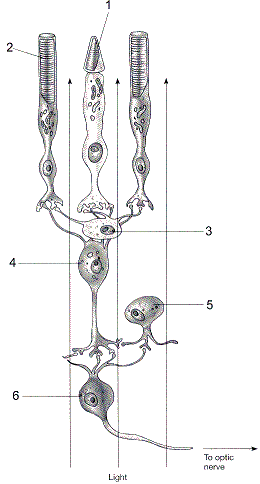Malaria is caused by Plasmodium falciparum, a non-motile protist that contains a cluster of microtubules at one end of the cell. Once injected into the blood stream, these microtubules are used to attach to red blood cells. Plasmodium falciparum is which of the following?
a. A protozoa
b. An algae
c. A slime mold
d. A diatom
e. An apicomplexan
Answer: e. An apicomplexa
Biology & Microbiology
You might also like to view...
Louis Pasteur developed the vaccine(s) for
A) anthrax. B) fowl cholera. C) rabies. D) anthrax, fowl cholera, and rabies.
Biology & Microbiology
What forces filtratin at the glomerular capsule?
A) The changing size of the blood vessel B) The pH difference across the filtration membrane C) The absence of a brush boarder D) The abundance of surface area
Biology & Microbiology
The type of cell labeled as 5 in the accompanying figure is a(n):

a. amacrine cell.
b. bipolar cell.
c. ganglion cell.
d. cone.
e. horizontal cell.
Biology & Microbiology
What are the short retinal photoreceptors responsible for color vision called?
A. Rods B. Cones C. Bipolar cells D. Ganglion cells E. Glial cells
Biology & Microbiology